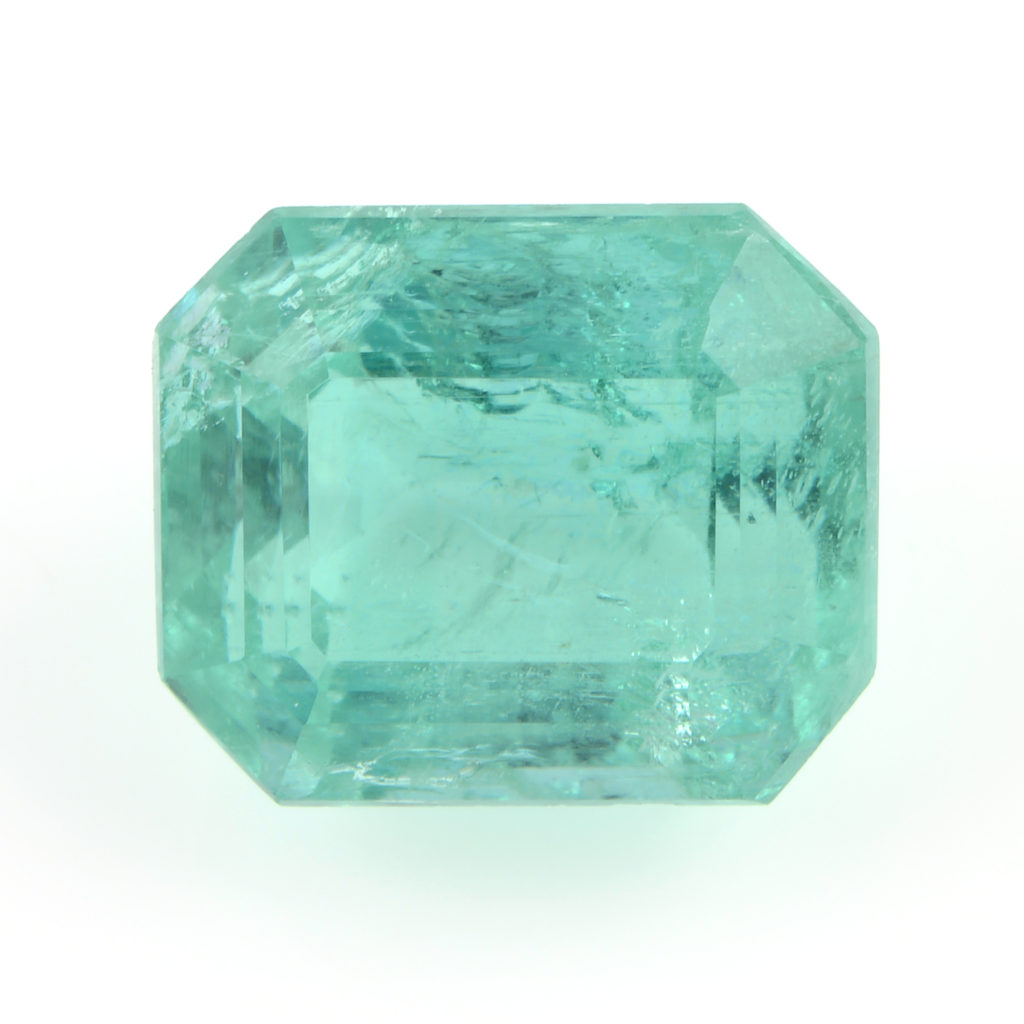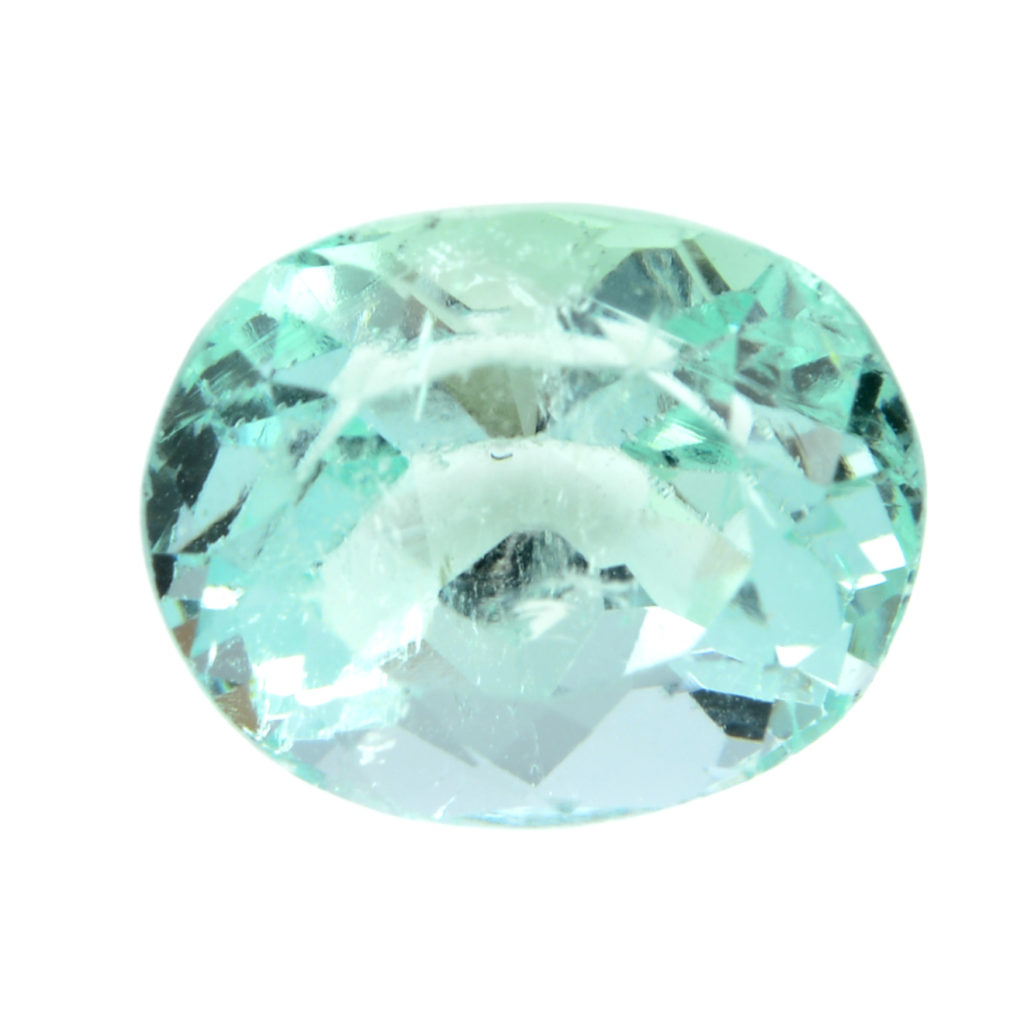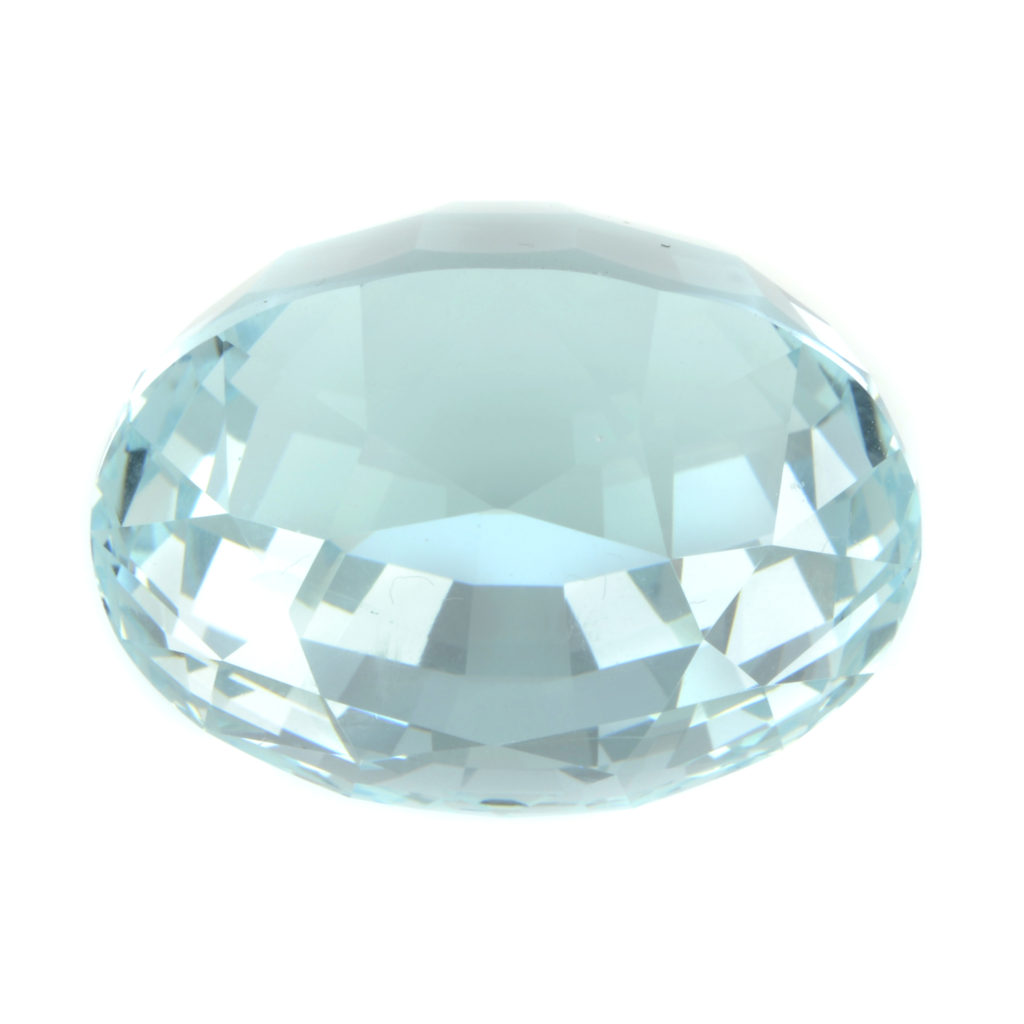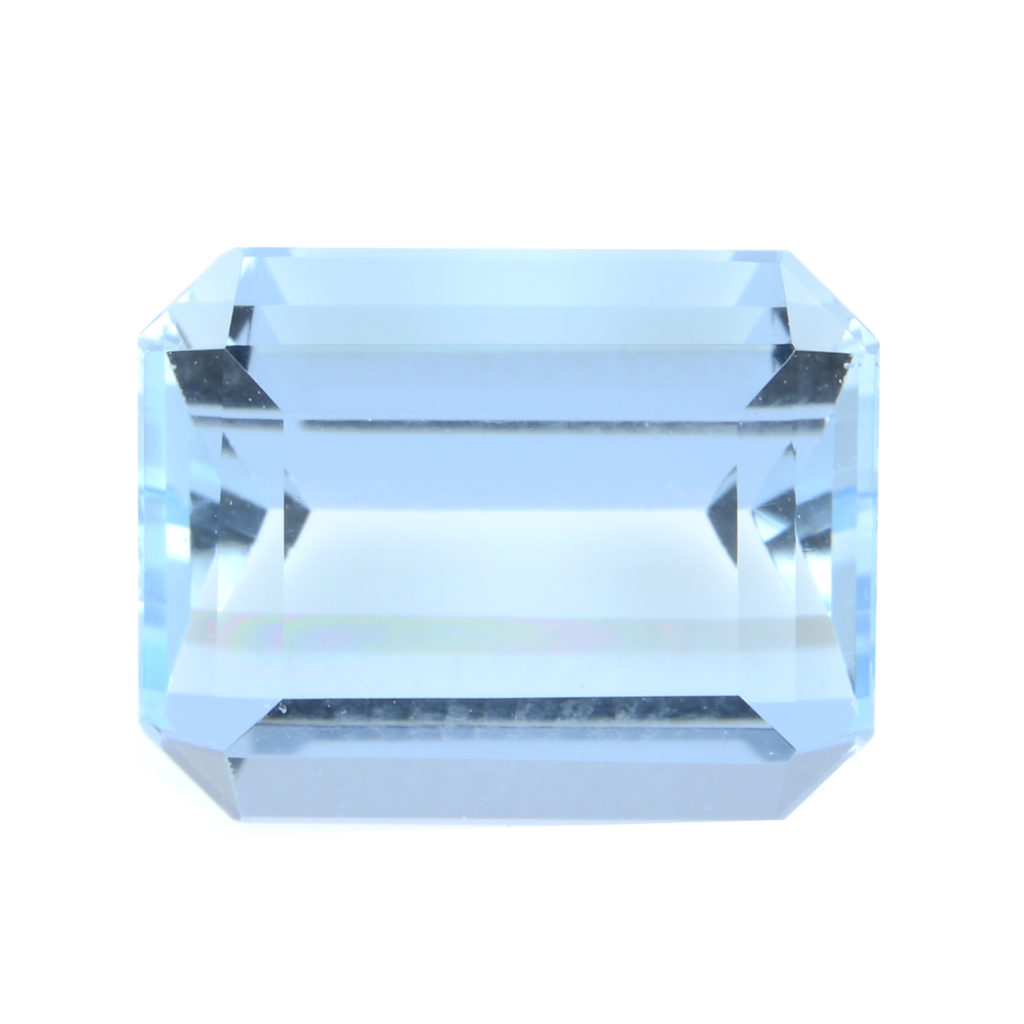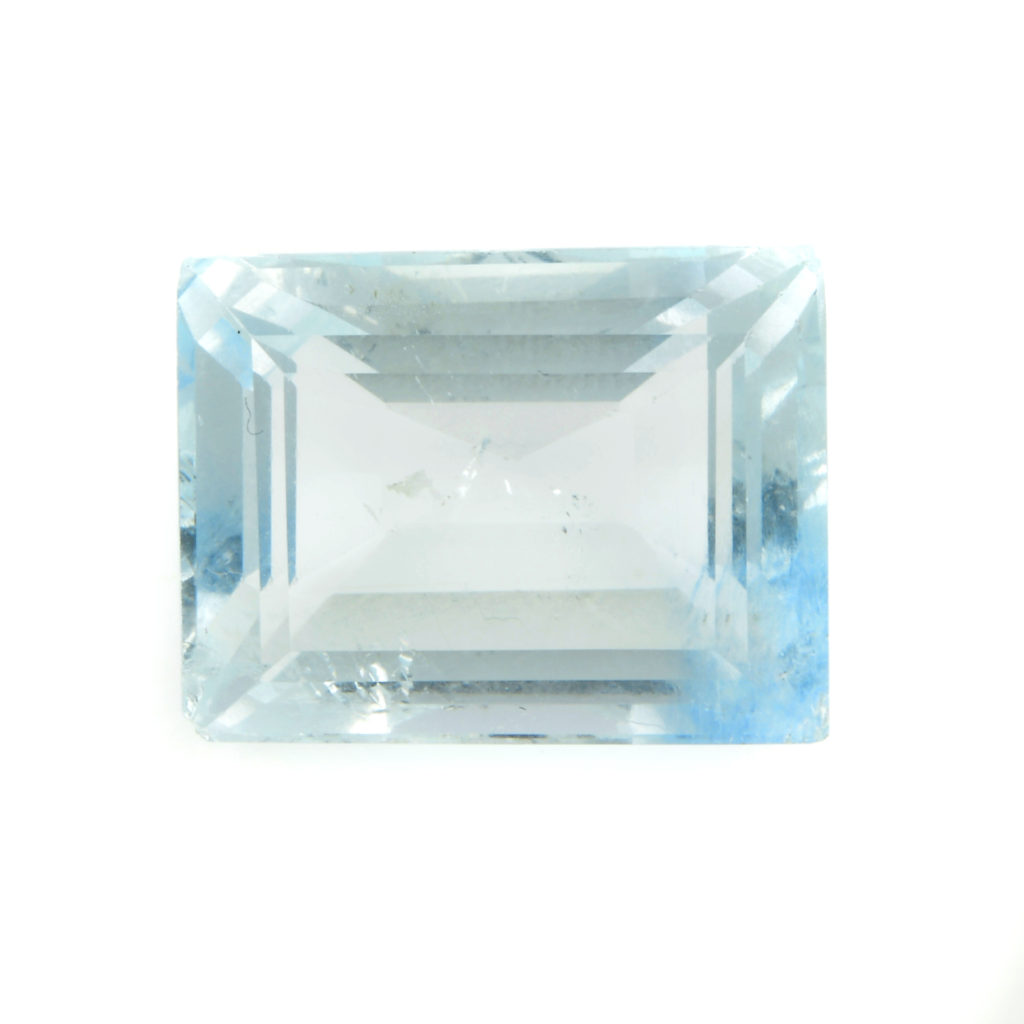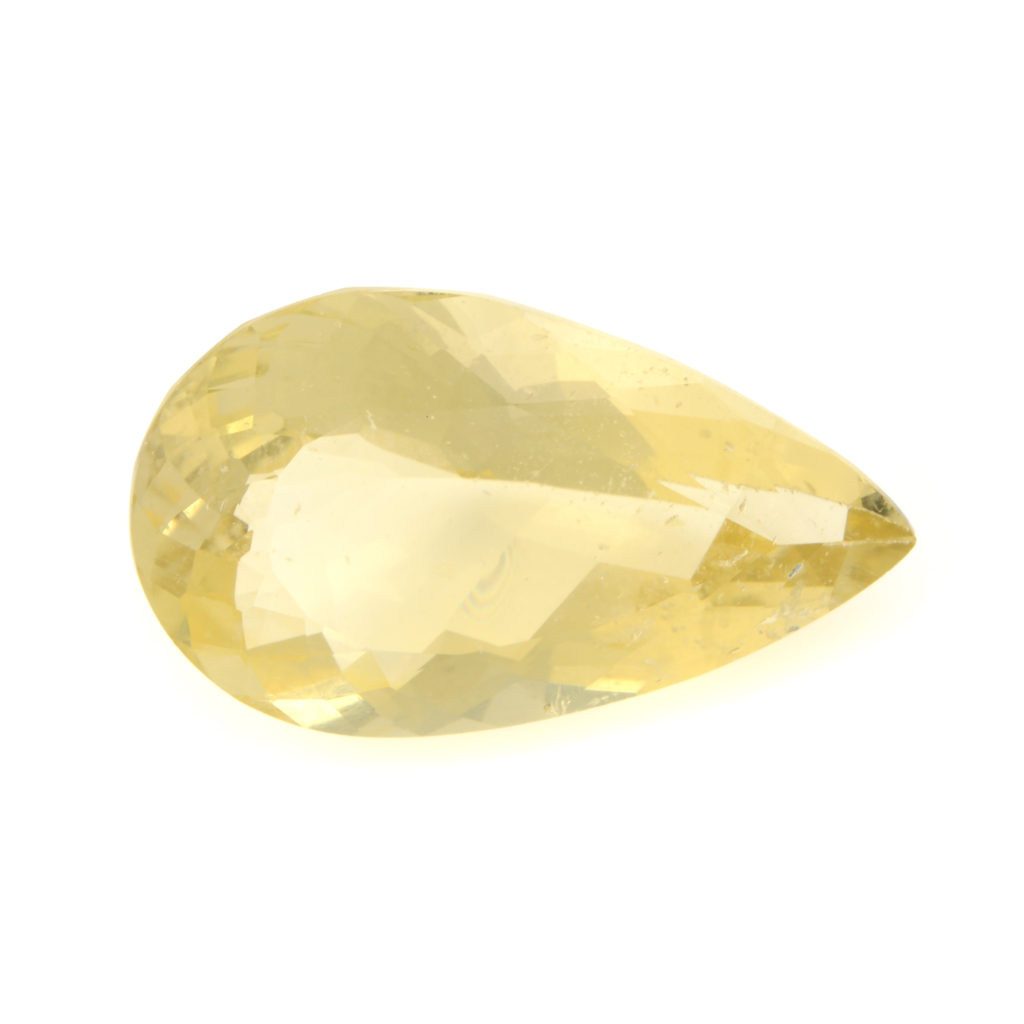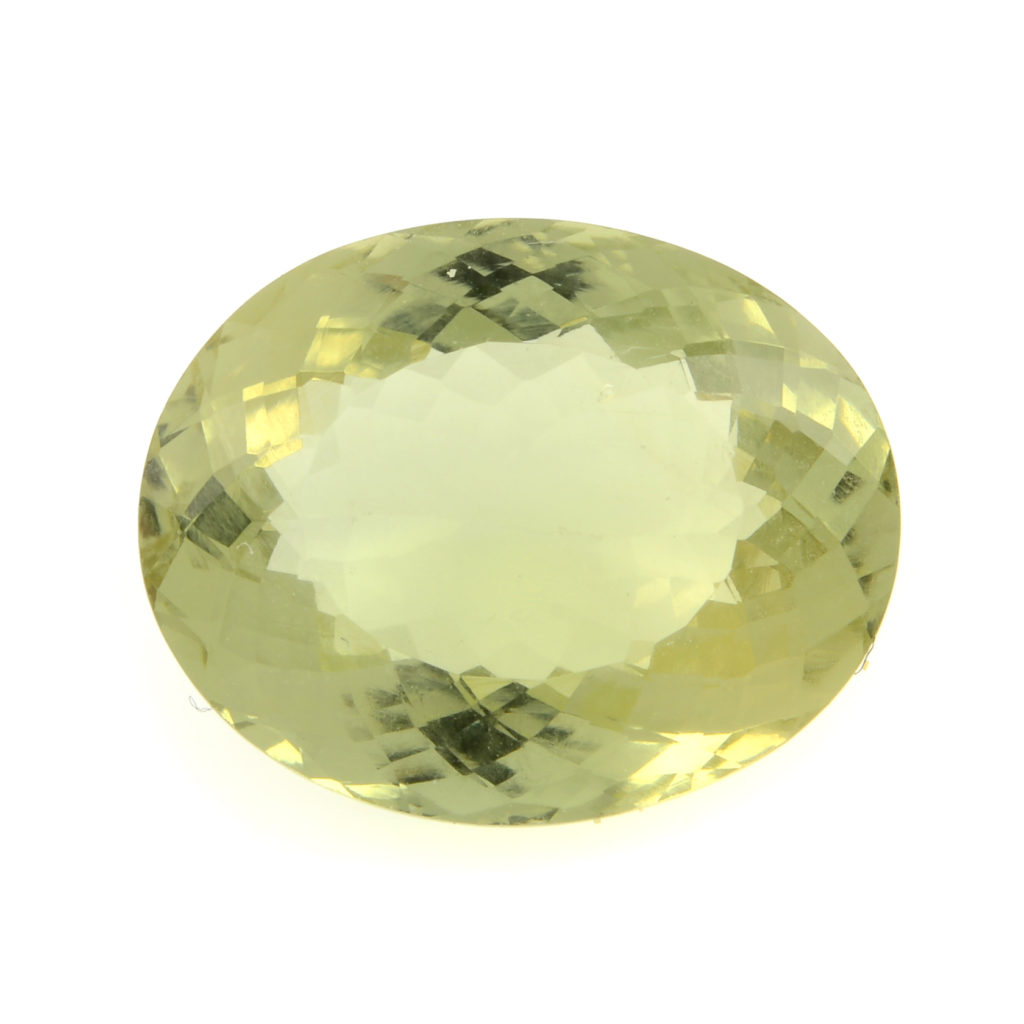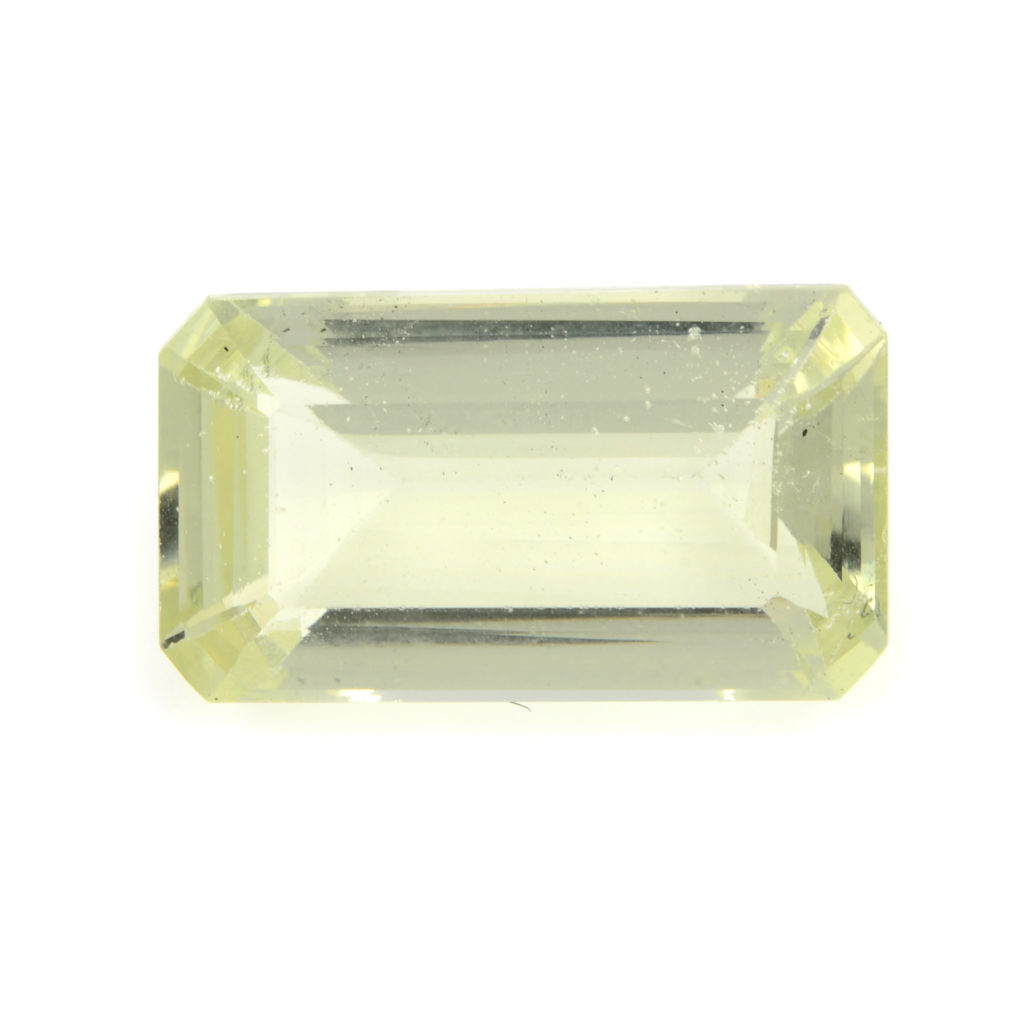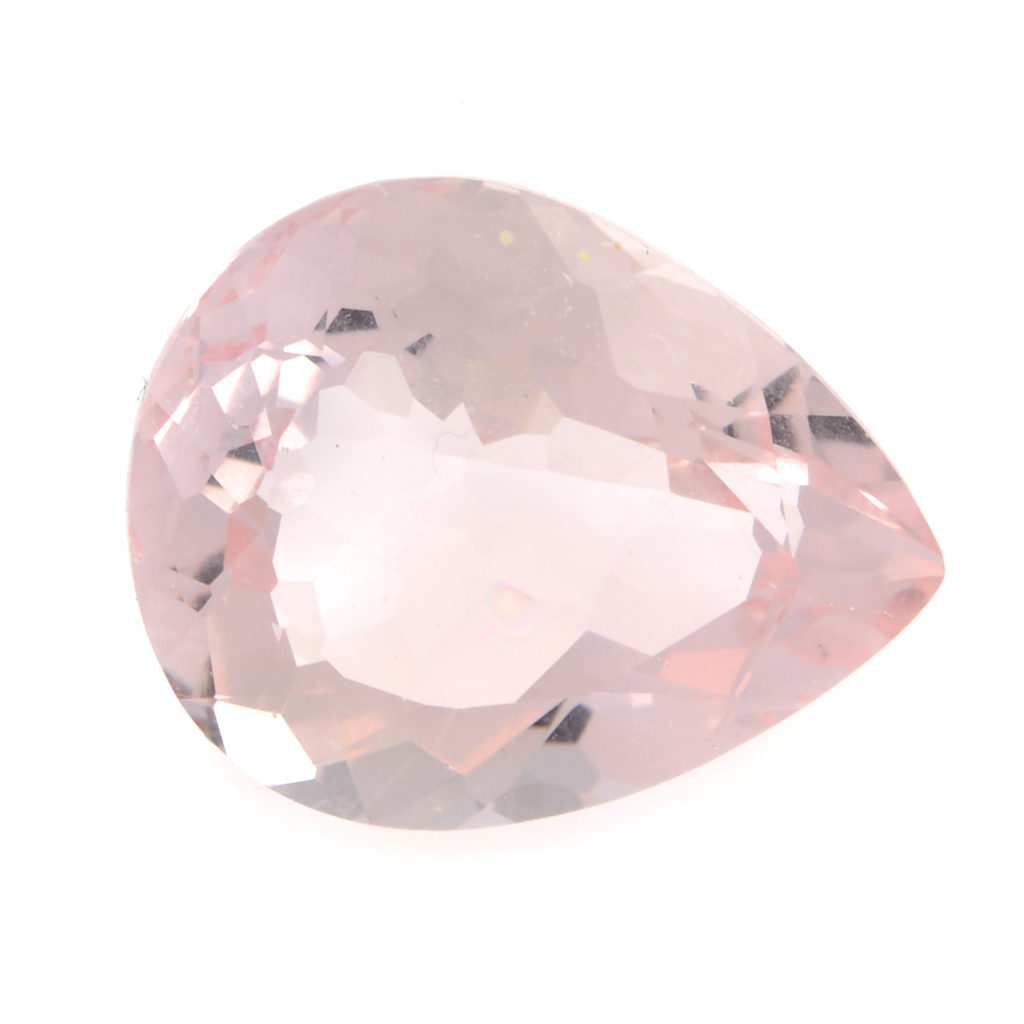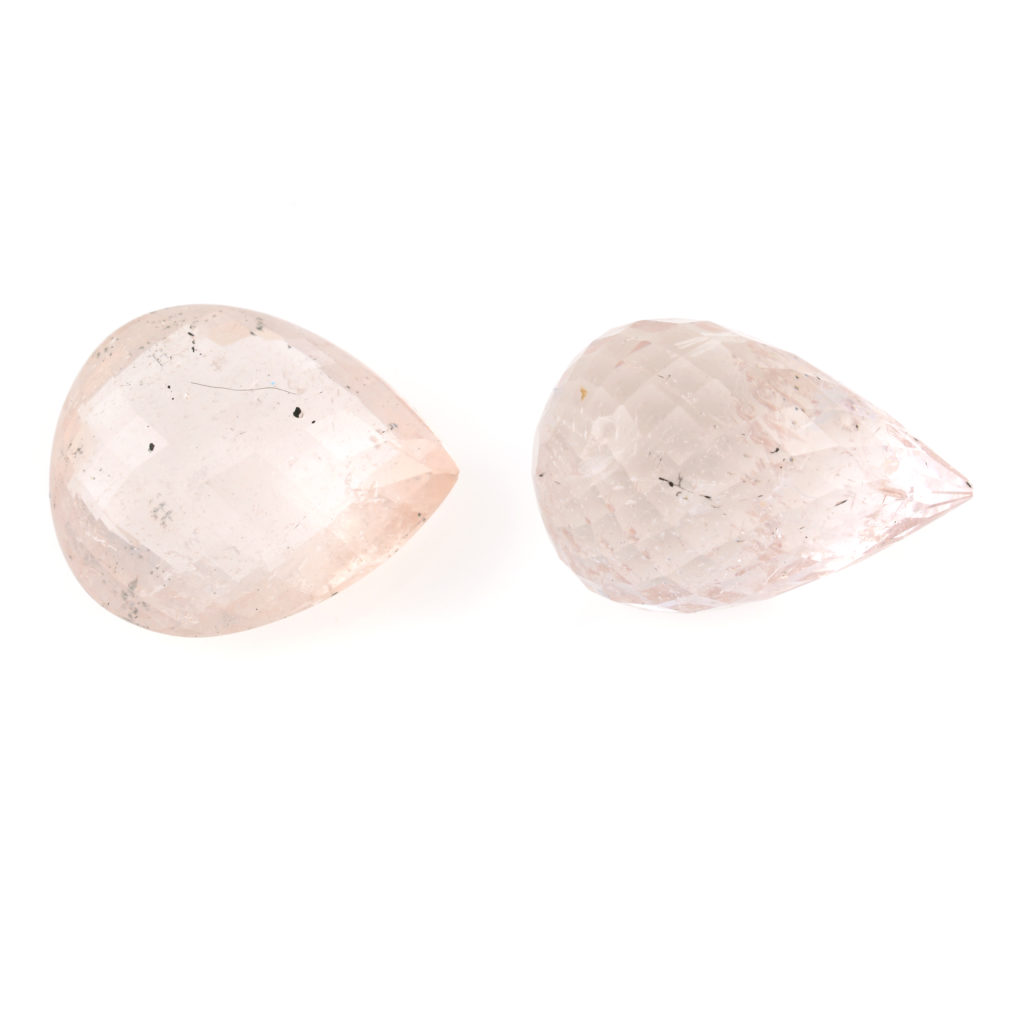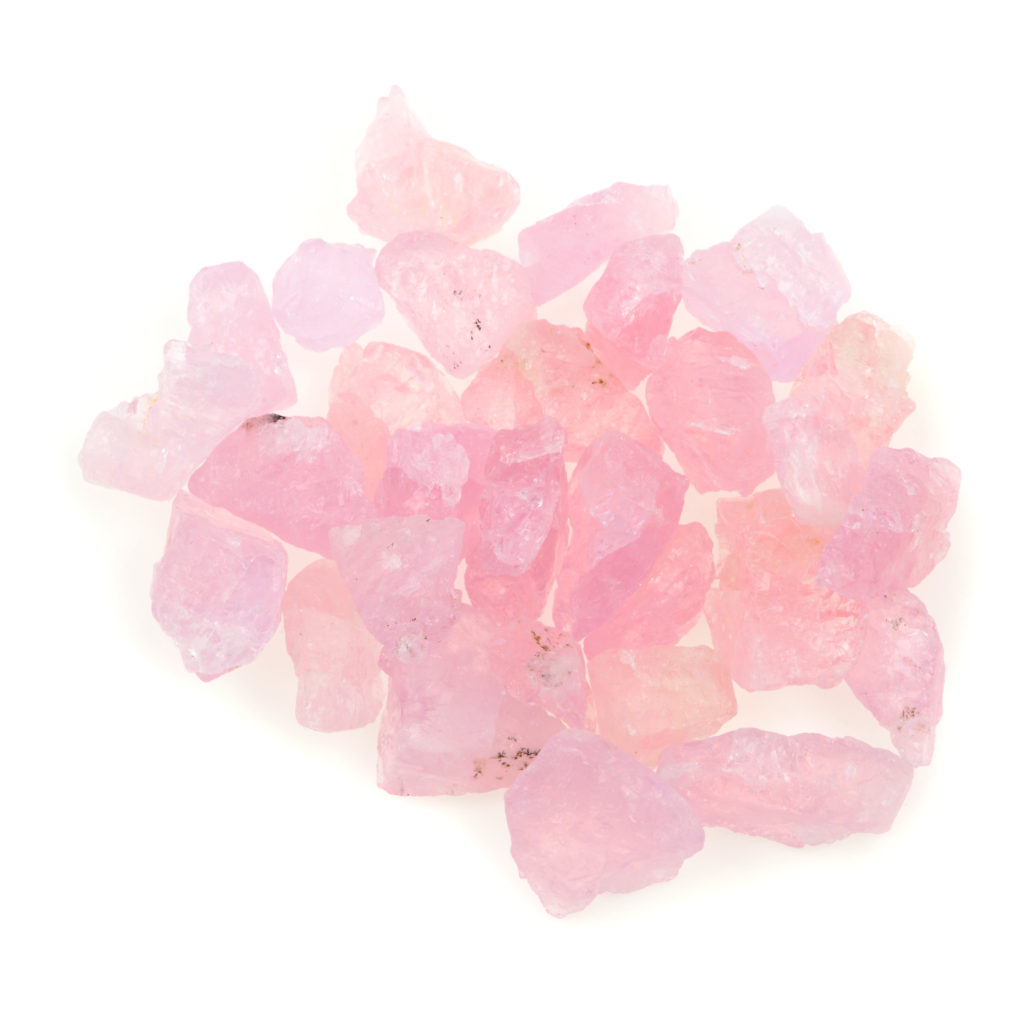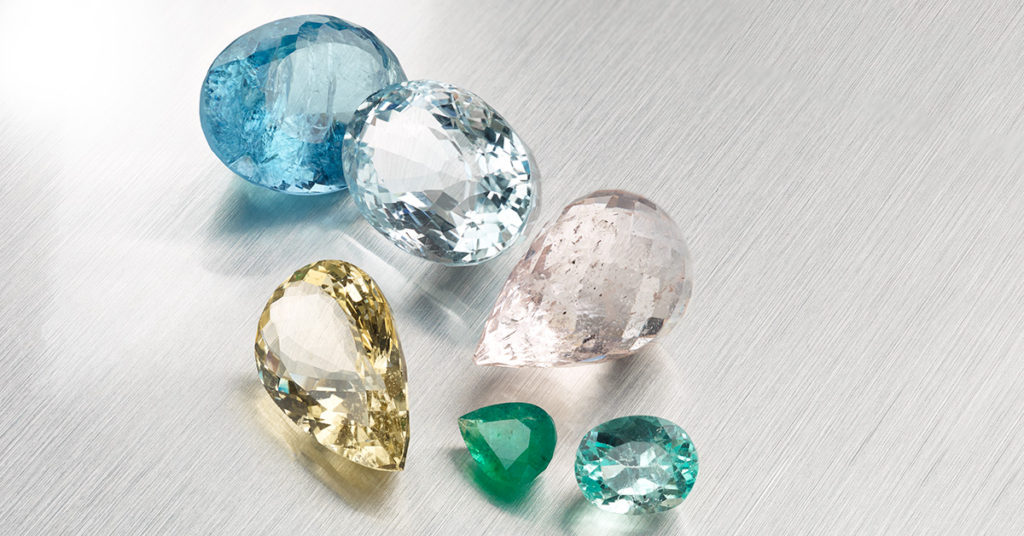
The ‘Beryl’ family includes gemstones that have the same chemical composition but differ in colour. All beryls are beryllium aluminium silicate, Be3Al2(SiO3)6 and the various colours are caused, as we have seen for other gemstones before, by the metallic trace elements that happen to be incorporated in the chemical composition of the growing crystals. When beryl crystals are pure, they will remain colourless.
The green variety of beryl is the well-known emerald1. The blue variety is aquamarine2. The yellow is called heliodor3. The pink variety is morganite, and the colourless is called goshenite.
Beryls have a hardness of 7.5-8 in the Mohs’ scale and are commonly used in jewellery. However, some care should be applied when handling and wearing them, especially if set in rings, as beryls are brittle stones and can chip easily. This was the reason why the emerald cut, a rectangular shape with the cut-off corners, was invented. This cut aims to show off the colour of the gemstones thanks to the rectangular-shape table. But also, to protect its corner from accidental damage.
1 The name emerald comes from the ancient Greek ‘smaragdos’ which meant ‘green gems’
2 ‘Aqua’ means ‘water’ in Latin and ‘marina’ means ‘of the sea’
3 ‘Helios’ means ‘sun’ in Greek.
Beryls: Emeralds
Amongst the so-called ‘precious’ stones, emerald is the most brittle and included. However, these features do not affect the lure that this green gemstone has had over the centuries. On the contrary, they give it character and make it even more interesting.
History wants Cleopatra to be the first ruler to have loved emeralds and many stories about the jewellery she wore and gifted to dignitaries have reached us today. One of the myths about ‘Cleopatra’s emerald mines’ was confirmed in 1800s when one of the oldest emerald mines was discovered in the Egypt Desert in the mountain valley of Wadi Sikait.
Although emeralds appear in literature fairly early and frequently, sources from this time can be misleading because the name ‘smeragdos’ was used for any green gem, emeralds as well as peridots and garnets, and later, in the XVI century, tourmalines were also confused with this beautiful gemstone.
Nowadays, the most sought-after emeralds are mined in Colombia. Good-clarity emeralds are one of the most expensive gemstones on the market.
The intense green colour is caused by the presence of Chromium (Cr), Vanadium (V) and Iron (Fe) within the beryl structure. If the colour is not intense enough, the gemstone would be called green beryl instead of emerald. The market request influences what hue is more appealing and an unbalanced concentration of the trace elements will cause either yellowish or blueish tints.

Beryls: Aquamarine
Aquamarines have fascinated humans for a long time. There are many interesting myths about this blue gemstone believed to come from the sea.
It was used to cure travel sickness as well as offered to the sea to calm particularly strong sea storms and is believed to soothe relationships.
The chemical difference from emeralds is identifiable in the strong presence of Iron (Fe) which also explains why certain emeralds that have a stronger iron content tend to have a bluish-green hue.
As for emeralds, the secondary hues of these gemstones can make a big difference in their value. If greenish-blue aquamarines used to be very popular, in the past decades the appeal has shifted to deepest blue colours. Brazil used to be the most renowned country for aquamarine mines. Especially, the Santa Maria aquamarines, so called from the name of the Santa Maria de Itabira mine. Today Africa is becoming one top areas for a quantity of aquamarine mined.
Beryls: Heliodor
The yellow variety of beryl is called heliodor or in the trade sometimes ‘golden beryl’ if the secondary hue is a strong orangish-yellow. The colour is caused once again by the presence of Iron, as with aquamarine, however with a different charge (Fe3+).
Although being chemically very similar to aquamarine, the value of heliodor on the market could not be more different.
Beryls: Morganite
With its soft pink hue, this beryl is coloured by Manganese (Mn) and it was only recognised in its own right in 1911 by George Frederick Kunz who named it after his friend, client and gemstones collector J. P. Morgan.
In the rough form, morganite often displays a salmon pink hue but as generally happens, crystals are heat treated to obtain a more appealing colour. In this case, the pink hues will become more prominent than the orange. These colour differences have also translated in gemstones coming from mines in Brazil or in Africa, with some morganites showing balanced peachy or pastel pink hues. The intensity of the colour is proven to be the most important feature for a morganite and will determine its price on the market.

